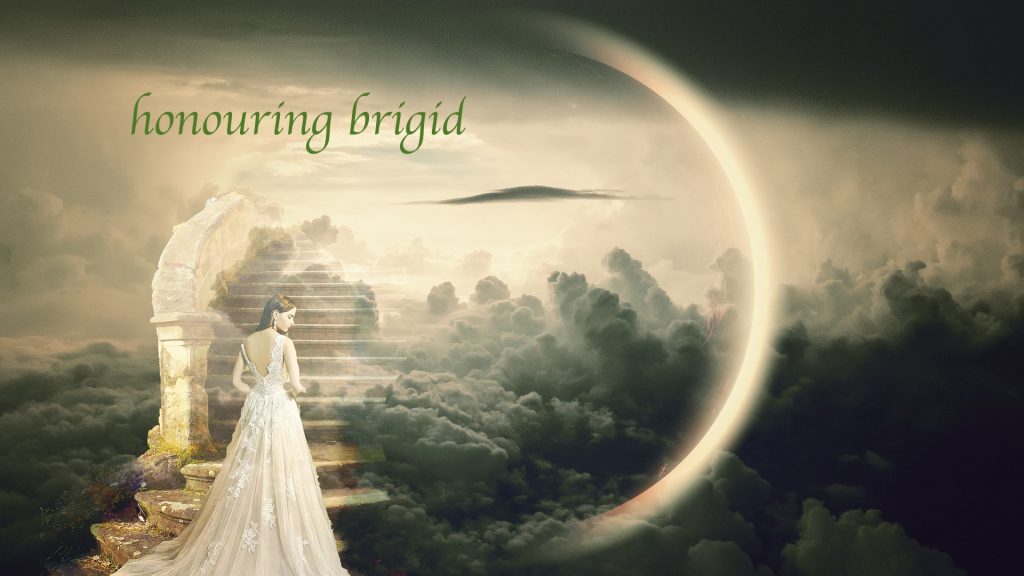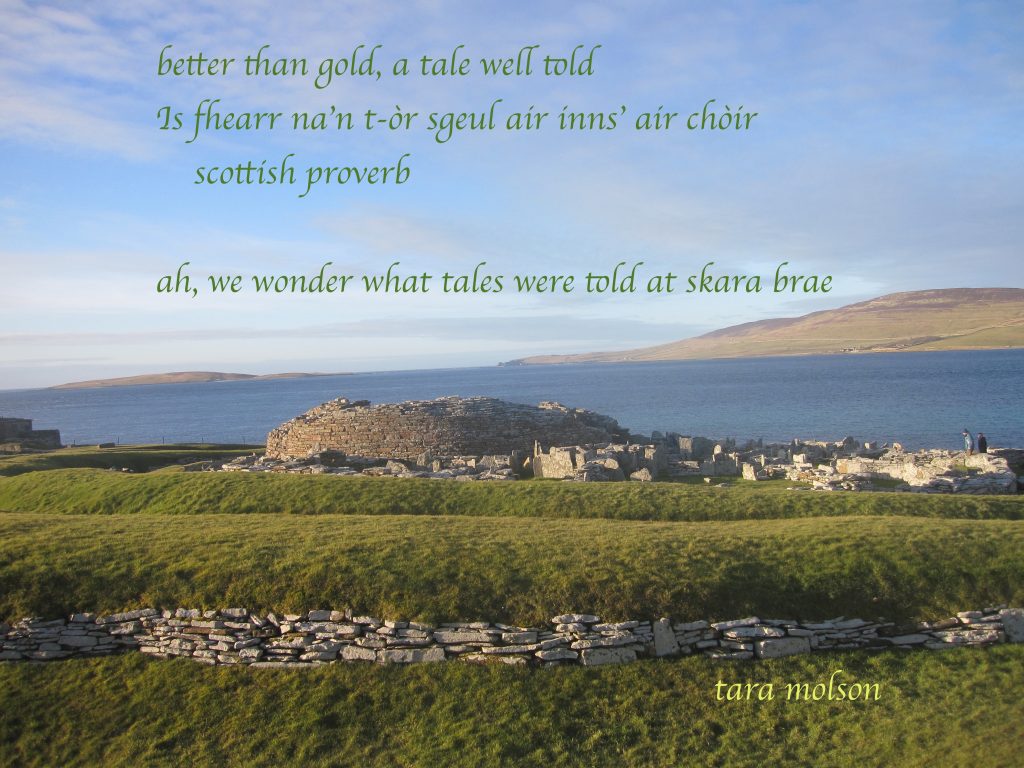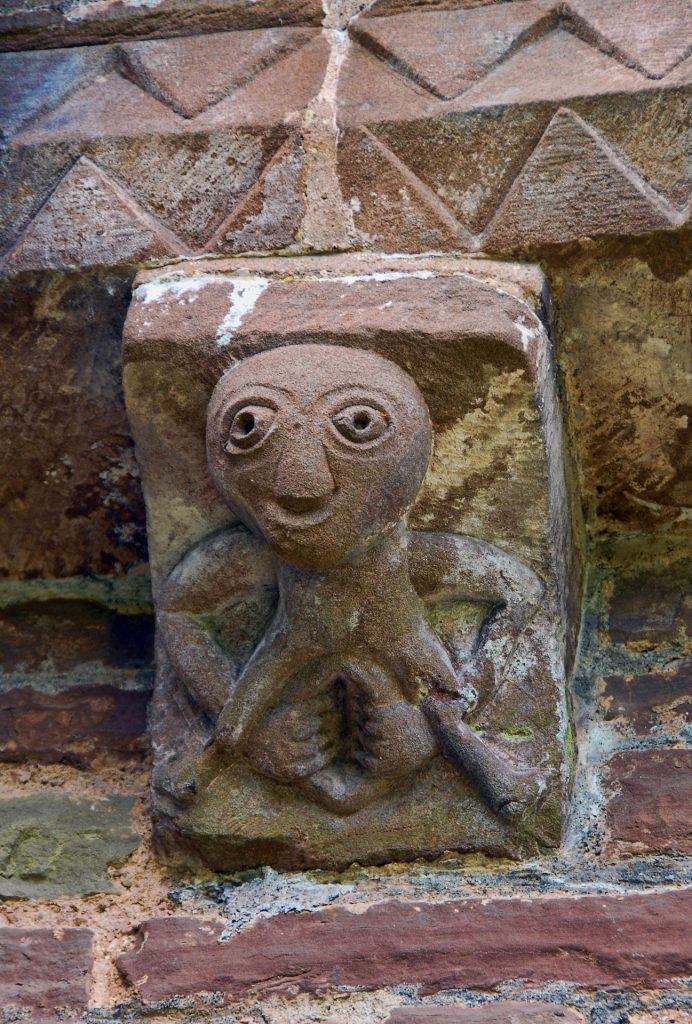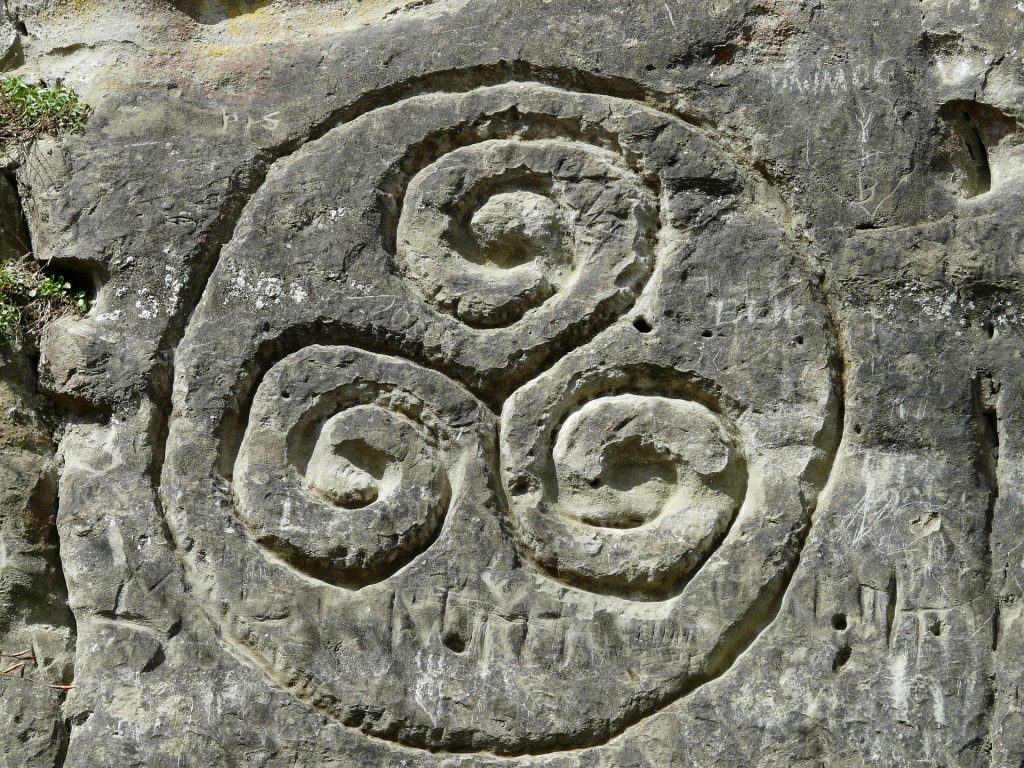The following stories are to honour the Goddess Brigid, who heard the Earth sing and dream of beauty.
Imbolc, aka the feast day of St. Brigid, is one of the four traditional Celtic sun or fire festivals, this one celebrating the beginning of Spring on February 1st. Remember, the Celts like to fest, and their day begins at sundown, so celebrations for Brigid begin on the eve of January 31st with a bonfire to start and make it last for three festive days, like the ancestors. It’s a time of new beginnings and new intentions for the new year. New, new, new. And what about the old? Back before Brigit was a saint. Back when the Celts knew a goddess named Brig or Bride (pronounced Bride-ee by my Irish mother).

“ Is fhearr na’n t-òr sgeul air inns’ air chòir.”
“ Better than gold, is a tale well told.”

Scottish Proverb
These words are written to honour Brigid, who heard the earth sing.

In Ella Young’s Celtic Wonder Tales (1910), Brigit heard the earth sing and dream of beauty. Brigit, daughter of the Good God Dagda, asked Angus the Ever Young to join her and go down to the earth but he refused, saying it was in a dark abyss filled with monsters. Nuada piped up that he would go first with his sword of light and they all travelled together and formed the first land, Ireland, The Isle of Destiny. So read the ancient Irish tales according to Ireland born Ella Young, who had a Masters degree from Trinity College in Dublin and ended up teaching at the University of California. She published Celtic Wonder Tales in 1910. Brigit was the only female goddess to come to earth and the only one who returned to Heaven, according to Ella’s tales.
With so many tales, one that resonates is the ancient Brigid presenting as the Cailleach in tales … my Irish mother was a stunning beauty inside and out; raven black hair and olive skin, the black Irish Donnelly clan; some called her a saint. When she died, she was in her 80s yet somehow shrivelled before her time, her hair black matted against her body, and in a last look, all I could think was how she looked like a little old Irishman curled up for an afternoon nap. That was before I knew the word Cailleach. Mom used to talk about Bride, pronounced Brid-ee. R.A.MacAvoy published The Book of Kells in 1985, the original ‘outlander’ idea, and in one scene she describes an encounter with Bride, the Mother as a old hag with a few teeth who says, “You make me tired, maiden, with all that fear. What old Bride will do is what she’s always done, she’ll turn to her caoruheacht and brew her beer. That’s what she’s always done.” And then she tells of her light son and her dark son and how she buries them again and again. Before she leaves the weary travellers, she reveals Brigid beneath her skin, the saint, the goddess, like the Cailleach has done in many ancient tales. I love R.A. MacAvoy’s telling of the tale in her novel called The Book of Kells.

Goddess Bride reveals the red tunnel of the Sheela-na-gig in R.A. MacAvoy’s 1985 novel, The Book of Kells

My mother and father chose the Feast of St. Brigid as their wedding day. If Cailleach is the goddess of winter, then Brigit is the other side of that dark, reflective self in winter and Brigit is the light half, soaking in the sunshine to restore her soul. Mom married Dad, her ancestors the Donnellys of the north of Ireland and his ancestors hailing from Morar in the Highlands of Scotland where the Old Woman of Winter, the Cailleach, is reborn on February 1st as Bride, the young maiden of Spring every year.
I wonder if all the Celtic goddesses were goddesses who transformed or shape shifted? And why? To bring attention to the fact that we live in a world of duality? And since we know it is a world of duality, and a world of free choice and will, then our sole soul purpose might be what Brigid’s seemed to be, to bring light into the dark abyss. What light did you bring with you? Do you sing? Dance? Give great hugs? Hope you have fun doing whatever you are doing … I find the fun and those smile memories sustain me through the abyss of dark experiences. I wish fond memories to you to sustain you.

At Kildare, Ireland, the eternal flame of St. Brigit was kept burning through pre-Christian times and Kildare is also known for its sacred Holy Wells. Both Fire and Water are associated with Brigid, again Brigid representing opposites. The ancient order of St. Brigit also recognized that she is also known as Mary of the Gaels. When Christianity was introduced to the early Celts, they would not give over to a religion where their beloved Goddess Bride was not included, hence St. Brigid was born. Celts celebrated February 1st as Imbolc, one of their fire festivals. Originally, the festival on February 1 was known as Imbolc, a gaelic word referring to the lactation of the ewes or the flow of milk that heralds the return of Spring. Later, the Catholics morphed Imbolc to Candlemas Day on February 2, which is dedicated to the Virgin Mary and features candlelight processions, and Brigit became St. Bride. The powerful figure of Brigid the Light-Bringer, who heard the earth sing and dream of beauty, was Christianized by the Catholic Church. The Church also took St. Bride back to the nativity and she became known as Mary’s handmaiden. In one version of her life from the Book of Lismore, a druid prophesies that she will be “a daughter conspicuous and radiant, who will shine like the sun among the stars of heaven.”
There is a lot to read about Brigid; you can check out beautiful pilgrimages to her Holy Wells, traditions about her dolls and crosses, ways to honour her, or make your own! Here are some that have inspired me to celebrate:
Féile Bride (Brigid’s Festival)
Goddess of poetry, healing & smithcraft
Goddess of dying, weaving and brewing
She had two oxen: Fea Feimhean
Guardian of Torc Triath, King of the Wild Boar
Three totem animals: oxen, boar & cattle
Cross of St. Brigid, the fiery sunwheel turning: These crosses of rushes or straw were made on St. Brigid’s Eve and hung in the house and often in byre and stable too, to honor Brigid and to gain her protection. The crosses took shapes that are not traditionally Christian, but looked like ancient sun symbols. The ancient symbol called the triskele is often associated with Brigid, as ‘Triple Goddess’.
SAINT OF THE FLAME
…she shall arise like a shining sun… — Lives of Saints, The Book of Lismore
Goddess of healers, poets, writers, artists, smiths, and craftsman.She blesses those who bring beauty into the world through music, story and other arts by gifting inspiration at Imbolc.
SAINT BRIDE OF SCOTLAND
In Scotland Brigid was known as Bride and some said she was the midwife at Christ’s birth. She was called Muime Chriosd, “Foster-mother of Christ”, while the divine Child was known as Dalta Brìde, “the Foster-Son of Bride.”
On the eve of Là Fhéill Bhrìghde, St.Brigid’s Day, the Old Woman of Winter, the Cailleach, journeys to the magical isle in the woods to drink of the Well of Youth. Transformed into Bride, she brings Spring.
A Dedication
This honouring of Brigit has been a long time coming for me; and dedicated to all friends and my new family, The Molsons of Whitby, and especially their fearless leaders, Jeff & Julie. They inspire me to be the best I can be, like they inspire everyone they know. Like my Mom & Dad, they filled their children full of love and sent them out into the big world where evil lurks. And still, like Brigid, they keep shining their light into this abyss. Long may they run, because we need them and all of you shining ones, now more than ever. Let’s play well & Shine On You Crazy Diamonds! (Love that Pink Floyd song!)

